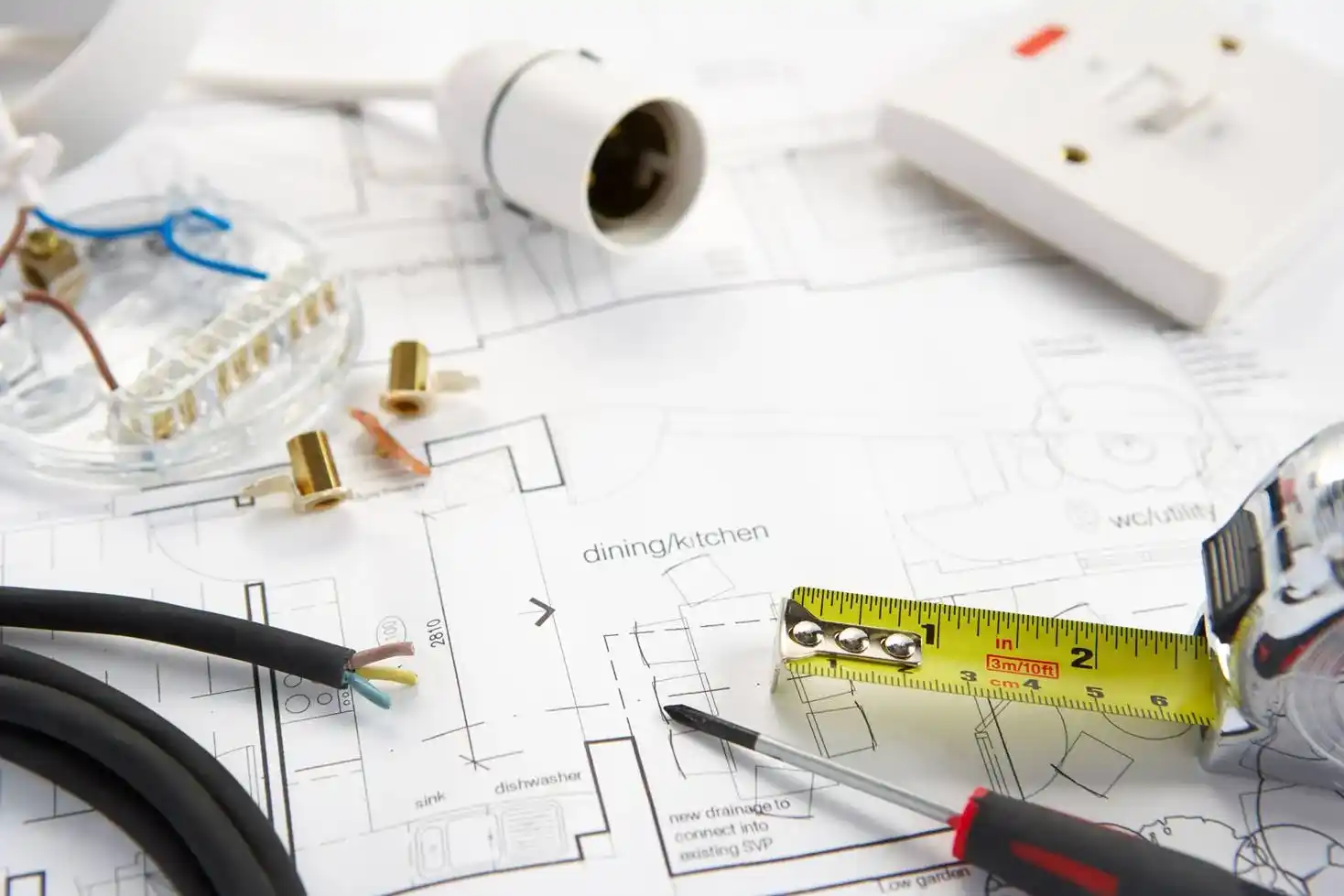Electricity is one of the cornerstones of modern society, but it can be very dangerous if handled incorrectly. Therefore, governments have introduced stringent codes to regulate its use and ensure safety for occupants. A building’s power supply must be safe to use, and it must also have the voltage and frequency required by the electrical appliances in the building. The systems that provide electrical safety and power quality are typically hidden from sight, but they play a fundamental role in buildings.
Electrical issues are more common in pre-war apartment buildings and other old constructions. Always make sure you get the installation checked before moving into an existing property, but especially if it very aged.
Electrical Protection Devices
The main function of electrical protections is to disconnect the power supply when dangerous operating conditions are present. The main types of electrical faults are the following:
- Overload or overcurrent
- Short circuit
- Ground fault
- Line-to-line fault
- Transient or voltage surge
Plug-in circuit breakers are perhaps the best-known electrical protection devices, commonly used in residential and light commercial applications (below 100 Amperes). Molded-case circuit breakers are generally larger and reach higher current ratings, while motor circuit protectors and thermal overload relays are designed for the protection needs of electric motors. Other than the plug-in configuration, there are protection devices designed for a DIN rail mount or for bolted connections.
An overload occurs when an electrical circuit is drawing current above its rated value for an excessively long period. It is important to note that short-duration overcurrent is common in some types of equipment. For example, three-phase electric motors may draw up to eight times their rated current during startup, but only for a short time - typically fractions of a second. Some types of lighting also draw an inrush current, especially if they have ballasts.
Circuit breakers typically use a thermal interruption mechanism to protect circuits from overload while allowing short-duration current peaks. The thermal protection mechanism uses a metallic contact that expands when heated by current, and it is calibrated to allow the circuit breaker’s rated current but not higher values. However, since inrush currents occur too quickly, their heating effect is not enough to expand and disconnect the thermal protection mechanism. On the other hand, an overload eventually trips the breaker; as current magnitude increases, the thermal protection contact expands faster and disconnects the circuit in less time.

A short circuit occurs when a live conductor touches a neutral conductor, causing a very high current. The magnitude of a short circuit fault is very high, typically thousands of amperes, so it must be disconnected as quickly as possible. In this case the response of thermal protection is too slow, so the protection mechanisms that clear short circuit faults are based on electromagnetic induction - the intense current induces a strong magnetic field that disconnects the circuit breaker.
A ground fault, also known as a line-to-ground fault, occurs when a live conductor touches a conductive element that is not part of the electric circuit. This also creates a very high current due to the low contact resistance, activating the magnetic protection mechanism of the respective circuit breaker. A line-to-line fault occurs when two live conductors at different voltage touch each other, also causing a high-magnitude current. In both cases, the same magnetic protection mechanism that clears short circuit faults responds and trips the circuit breaker.
All the faults described above are characterized by excessive current. When a high voltage peak occurs, the fault is called a transient or a voltage surge. Voltage surges normally occur when large equipment is switched, and can also be caused by lightning. Since circuit breakers are not designed to protect installations from voltage surges, you must use a surge protection devices (SPD) or transient voltage surge suppressor (TVSS). One of the most common types of TVSS use a variable resistance (varistor) connected between the live conductors and the ground - its resistance is high under normal operating conditions, but drops to a very low value in response to voltage peaks, discharging the fault to the ground before it reaches sensitive equipment.
Improving Power Quality
Electric power systems may also suffer from issues that are not faults strictly speaking, but which are also detrimental for performance. Two of the main issues are low power factor and harmonics.
Power factor is a very abstract concept, but the following is a simple way to visualize it. Some types of electrical equipment draw current in such a way where not all the power drawn from the voltage supply is really consumed. In these cases, the term “real power” is used to describe the power that is actually used, and the term “reactive power” is used to describe the portion that oscillates back and forth between the equipment and the power supply without being used. Some of the most common loads associated with reactive power are electric motors, transformers and ballasts. The power factor is the ratio of the real power used and the apparent power - the direct multiplication product of voltage and current.
- Assume a single-phase motor consumes 900 W of electric power while drawing 5 amperes at 240 volts.
- The apparent power is 1,200 volt-amperes (240V x 5A).
- The power factor is 0.75 (900W / 1200 VA). It can also be reported as 75%.
- The maximum possible value is 1.00 or 100%, where all the power drawn from the voltage source is consumed. Purely resistive loads such as incandescent lamps and resistance heaters behave this way.
Low power factor increases the current drawn by a building, and this creates an extra burden for the grid. Therefore, utility companies typically penalize users that allow their power factor to drop below a specified value. Low power factor is corrected by installing capacitors, which are similar to batteries but designed for a much faster cycle - the oscillating current that characterizes reactive power is supplied locally by the capacitor, and not drawn from the power grid, sparing the user from extra charges.
Electricity rates in New York City are already among the highest in the USA, so you will want to avoid additional charges whenever possible. Power factor correction is characterized by its quick payback period, typically less than one year.
Harmonics are voltage and current signals whose frequency is a multiple of the service frequency - 60 Hz in the USA. Harmonics are produced by nonlinear loads such as magnetic cores and digital equipment, and they tend to overheat circuits, especially the neutral conductor. Excessive harmonics can also cause some types of electronic equipment to malfunction. Harmonic filters are devices that are tuned for a specific harmonic frequency, and when installed in a power system they prevent the propagation of harmonics beyond the equipment that generates them.
Conclusion
The best recommendation to keep all these electrical issues under control is to seek professional assistance. In new constructions, protection and power quality can be addressed from the design stage. For existing buildings, power monitoring equipment can be used to detect harmonics or low power factor, and the measurement results are then used to specify harmonic filters and capacitors. If circuit breakers are tripping frequently, get an inspection to determine the cause: there could be an electrical fault, but the breaker itself could also be damaged.







